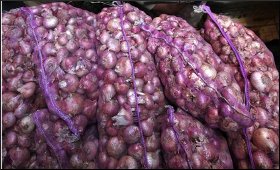|
|
|

|
Arrival of wheat, onion, potato, mango, banana dips 50-95% in lockdown
|
|

|
|
| Top Stories |
 |
|
|
|
SME Times News Bureau | 09 Apr, 2020
National daily arrivals of several crops like wheat, chana dal, onion,
potato, apple, banana and mango are down by 50-95 per cent compared to
last year since the lockdown on March 24 due to lack of trucks and
shortage of labour.
According to a research report by Credit
Suisse, with the rabi harvest season now in full swing, market arrivals
should be picking up for crops like wheat, pulses like chana, and summer
fruits like mangoes.
However, despite anecdotal evidence of a bumper harvest, market arrivals are down 50-95 percent year on year.
For
some items like mangoes, the season started slow like in 2018, but by
now, volumes should have risen manifold versus last year: they are down
sharply instead. Reasons range from a lack of trucks, and shortage of
labour for loading/unloading material.
There are other issues
like in the Lasalgaon onion market near Nashik, the market itself being
shut down because of a case of Covid-19 nearby.
With lower
incomes during the lockdown, currently demand for perishables is likely
to be weak anyway, particularly from restaurants, but that is a minor
reason for the drop in arrivals, Credit Suisse said.
Market
dysfunction hurts both producers and consumers, the report pointed out
that as per reports, only a fraction of the nearly 7,000 wholesale
markets in India are functioning.
For non-perishable output like
wheat and pulses farmers have some holding power, and government
stockpiles and an existing public distribution system should limit
sustained market shortages.
"But for perishables like vegetables
and fruits, this disruption means lower incomes for farmers (nowhere to
sell: some feeding spinach to cows), whereas consumers see scarcity,"
the report said.
This will provide some opportunity for reform
but it is uncertain how long it lasts, it said. As regular markets are
not functional, parallel channels are emerging.
Some states are
providing temporary permissions to large buyers like grocery chains and
e-commerce firms to buy directly from farmers.
Farmers are also
being permitted to hawk their produce directly to consumers. "If these
last beyond the virus-driven lockdown, they could end up dismantling the
monopoly of APMCs that many have blamed for inefficiency. It may be too
early to take a call on that," the report said.
|
|
|
| |
|
|
|
|
|
|
|
|
|
|
|
|
|
|
| |
| Customs Exchange Rates |
| Currency |
Import |
Export |
US Dollar
|
₹91.25
|
₹89.55 |
UK Pound
|
₹122.85
|
₹118.85 |
Euro
|
₹107.95
|
₹104.3 |
| Japanese
Yen |
₹59 |
₹57.1 |
| As on 29 Dec, 2025 |
|
|
| Daily Poll |
 |
 |
| What is your biggest hurdle to scaling right now? |
|
|
|
|
|
| Commented Stories |
 |
|
|
|
|
|
| |
|